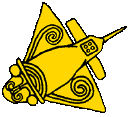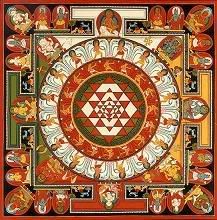Lets talk about what makes up the 33 million
Gods described in the ancient scriptures of Hinduism. Why Hindus worship so many gods and goddesses is a real mystery for most
people. The interesting
thing is that one culture can see this as fiction while most Hindus, without a
second thought, can walk into a temple with multiple deities, bow down and
offer prayer and worship with devotion treating that deity as much like a
person as you and me.
I’m going to break this
topic down to smaller segments simply to ensure that ‘I’ will not confuse
myself further. One aspect that has always been fascinating me is the relationship
of our God and Demigod with their ‘Vahanas’.
Vāhana (वाहन, skt. that which carries, that which pulls)
denotes the being, typically an animal or mythical entity, a particular deva is said to use as a vehicle. In this
capacity, the vāhana is often called the deity's mount. Upon the partnership between the deva and
his vāhana is
woven much iconography and mythology.
Often, the deva is iconographically depicted riding
(or simply mounted upon) the vāhana.
Other times, the vāhana is depicted at the deity's side or
symbolically represented as a divine attribute. (SOURCE: WIKIPEDIA)
Eg: The
Garuda, the vahana of Sri Maha Vishnu, one of the Divine Trinity, is a large
mythical eagle-like entity that is part of both Hindu and Buddhist culture. The
Garuda is often depicted as having a shiny, golden body, red wings, white face,
a sharp, eagle's beak and a man's body. He is a powerful creature, full of
energy and a size big enough to block the Sun God Himself! The Garuda is one of
the most powerful demigods and is given an important place in Indian mythology.
This can be gauged by the very fact that there is a complete Upanishad and
Purana (Garudopanishad and Garuda Purana respectively) on him. Garuda has
several other names such as Syena, Gaganeshvara, Chirada, Khageshvara,
Kashyapi, Kamayusha, Sitanana, Sudhahara, Nagantaka, Tarkshya, Suparna, Vishnuratha,
Vainateya and so on.
Below is a list of Hindu gods and goddesses
who are inseparably linked with their respective 'vahanas':
·
Aditya
- seven horses
·
Agni
- the ram
·
Brahma
- seven swans
·
Durga
- the lion
·
Ganesha
- the mouse
·
Indra
- the elephant
·
Kartikya
- the peacock
·
Lakshmi
- the owl
·
Saraswati
- the swan or the peacock
·
Shakti
- the bull
·
Shani
- the crow
·
Sheetala
- the donkey
·
Shiva
- Nandi, the bull
·
Varuna
- seven swans
·
Vayu
- a thousands horses
·
Vishnu
- Garuda, the eagle & Adi Shesha, the serpent
·
Vishwakarma
- the elephant
·
Yama
- the male buffalo
·
Durga - Lion or Tiger
·
Chamundi- Owl
·
Asvini Devas – Donkey (also
for Indra and Agni)
·
Sun - 7 Horse Chariot
·
Rahu/ Shasti - Cat
·
Rathi - Pigeon
Now comes the big question: Why does our God have these
animal representatives as their mode of transport when it is truly impractical to
ride them or even domesticate them in this context!!
What if these were actually the interpretation of mankind
that lived during this era together with our fellow ‘space travelers’ (GOD)
that were here to impart their knowledge on civilization or to actually exploit
planet earth for some important elements? Humans were just getting accustomed
with civilization during this era by which these space travelers were helping
us cope with these advancements. We were still relying on domesticated animals
as a mode of transport (eg: horse, cow, elephant and so on). What if all these
vahanas were actually base on that current civilization of mankind during that
era??
The
divine vehicle or vahana of Lord Muruga is a peacock named Paravani. The Vahana peacock is also by
way of representation that the Lord has entirely conquered pride, egoism,
vanity. What If
Lord Muruga’s actual mode of transport was this flying object that was pretty colorful?
This flying object in the eyes of our fellow ancient humans might have been interpreted
by them as a peacock. They might have
come to an understanding that this flying object is what a peacock might have
been in the world of these Gods!!
Same
goes for Lord Ganesha with his vahana- the mouse. What if Lord Ganesha as what
he has been portrayed to be ‘fat’ resembling an elephant to be using a small
motorcycle as his mode of transport. Humans might have thought it to be a mouse
from the world of these Gods.
Lord Indra
the chief of swarga loka with his white elephant named Iravata which actually
flies – put it this way, Lord Indra piloted a huge white vehicle that was able
to take off from ground, just like any jumbo jets would do these days. People
saw it as a white elephant.
After thousands
of years into civilization we are now building aircrafts, spacecrafts and all
these sophisticated machineries base on the blueprints given to us by nature!! Super
jets are being constructed according to the mechanics of a falcon, submarines
base on whales and we even have a name for it- BIOMIMICRY!!
So
basically when these tales were carried from one generation to the next, we
simply concluded that these vahanas were indeed animals and we never gave us
room to question this aspect and continued to instill this fake belief in us
that Gods have mystical power, so do not dare questioning these scriptures!
If you believe in Vimanas to be spacecrafts as much as I do, then I sincerely think that you will give a thought to the context of Vahana to be more complex than what it actually symbolizes.










